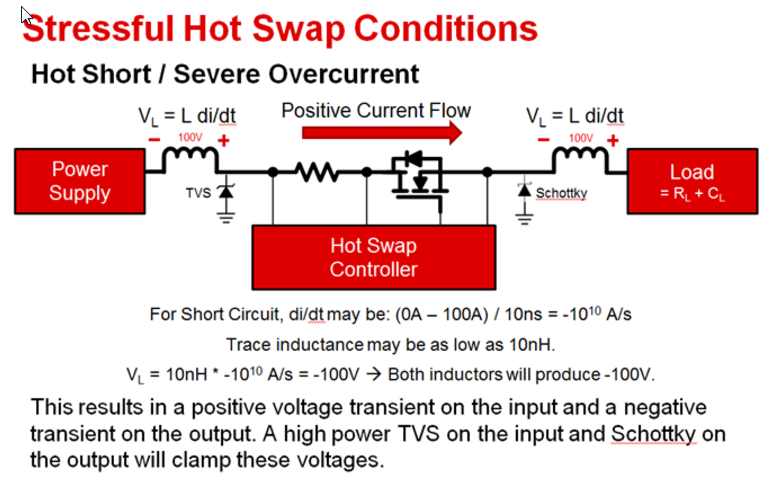Hey,
We are using the TPS2492 in a new design as a High Side Load Cut Off switch in a 24V electronic.The supply input voltage is 24V and one requirement is that the TPS2492 should switch off the output in case off overload or short. Now we have finished our first prototype boards and have checked the function. One test case was to apply a direct hard short on the 24V output directly after the output capacitor during normal operation any time when the TPS2492 is in on state. When we do this we measure the following figure:
Yellow= output voltage, Blue: 3.3V logic supply voltage in the system, green = output current
We see, that the TPS2492 switch of the short, but a verry high current impulse (ca. 130A) happens with a verry high slew rate. This generates an crosstalk to other supply voltages in the system (like 3.3V or 5V supply).
So my question was: Do you have experience with the handling of hard output shorts during normal operation? I have doubts because of this sharp & high current impulse because of influence and crosstalk problmens into other lines in the circuit. How does other customers handle this case. I'm thinking about to add an additional output serial inductance for limiting the current slew rate and for give the TPS2492 time for cut off and eliminate the high current peak? Do you have some tipps or proposals?


